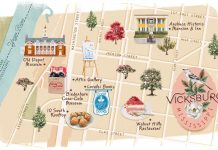
Paul Marcellini
With its vast wilderness, colorful history, and myriad plant and animal life, the Florida Everglades possess an almost mythical quality. The subtropical park on the southern tip of Florida is “one of the unique regions of the earth,” according to noted writer and environmentalist Marjory Stoneman Douglas. Indeed, the incredible mix of temperate and tropical plants and animals living in sync with an annual cycle of flooding and drought make the Everglades a place like no other.
While most early national parks were established to preserve scenery and geography, conservationists lobbied to create Everglades National Park as a way to protect the area’s wildlife and ecosystem from developers and local plume hunters. Their push was the result of tragedy: Just a few years after the American Ornithological Society hired Guy Bradley as a bird warden for the area (making him one of the first game wardens in the nation), he was shot and killed in 1905 while trying to protect a wading-bird rookery. The killing galvanized the fledgling conservation movement, and in 1947, Everglades National Park was established.
Spanning about 1.5 million acres, the park has many superlatives: largest continuous stand of sawgrass prairie in North America; largest mangrove ecosystem in the Western Hemisphere; largest designated wilderness area in the Southeast; and the most significant breeding ground for tropical wading birds in North America. Moreover, it’s a habitat for thousands of reptiles, fish, and mammals, including endangered species such as the West Indian manatee, American crocodile, and Florida panther.
 Once common throughout the southeastern United States, the population of Florida panthers dwindled to twenty-odd individuals during the 1970s. Thanks to genetic-restoration efforts, almost 100 panthers are estimated to live in Everglades today.
Once common throughout the southeastern United States, the population of Florida panthers dwindled to twenty-odd individuals during the 1970s. Thanks to genetic-restoration efforts, almost 100 panthers are estimated to live in Everglades today.
Field Notes
Visitors 1,080,000 in 2015; March is the most crowded month, September the least.
Camping Long Pine Key Campground and Flamingo Campground are drive-in accessible and accommodate tents and RVs. For a rugged experience, a variety of backcountry sites ($15 for a permit and $2 per person per day) are located along the forests and beaches and on elevated platforms known as “chickees.”
Must-See Birdwatching is one of the most popular activities at Everglades, thanks to its 360 species and designated birding spots. The popular Anhinga Trail, which begins at the Royal Palm Visitor Center near the main park entrance, winds through a sawgrass marsh and affords excellent opportunities to spot egrets, herons, and of course, anhingas (also known as water turkeys), particularly during the winter months.
Must-Do Shark Valley, located in the less-visited northern section of the park, offers a variety of activities, including miles of walking and biking trails, ranger-guided tram tours, abundant wildlife, and a sixty-five-foot observation tower that provides panoramic views of the Everglades from the highest accessible point in the park.
Insider Tip While wildlife is the big draw in Everglades, visitors may also discover a piece of Cold War history at an abandoned 1964 Nike Hercules Missile Site built in response to the Cuban Missile Crisis. December to April, rangers lead tours of the base, which remains almost unchanged since its 1979 closing.




![The North Carolina Museum of Natural Sciences’ newest exhibit is a [pre]historic first](https://cdn2.atlantamagazine.com/wp-content/uploads/sites/4/2024/04/DD-3-218x150.jpg)




![The North Carolina Museum of Natural Sciences’ newest exhibit is a [pre]historic first](https://cdn2.atlantamagazine.com/wp-content/uploads/sites/4/2024/04/DD-3-100x70.jpg)




